Mars, snakes, robots and DNA Understand article
Science in School is published by EIROforum, a collaboration of research organisations. Eleanor Hayes, Editor-in-Chief of Science in School, reviews some of the latest news from the EIROforum members.
EIROforum
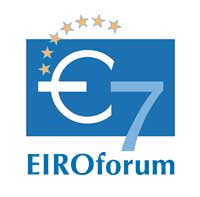
EIROforum, the publisher of Science in School, is a partnership of eight European inter-governmental scientific research organisations (EIROs). As regular readers of Science in School will know, the range of research done at these organisations varies widely – from molecular biology to astronomy, from fusion energy to space science. The equipment is also very disparate – including enormous particle accelerators; beams of neutrons or high-energy X-rays; large telescopes or the International Space Station.
Whether individually or as part of EIROforum, the EIROs are also involved in many outreach and education activities – for school students, teachers or the general public. Science in School is one example of a joint EIROforum activity; this article details some of the other research and outreach activities of the EIROs.
To learn more about EIROforum, see: www.eiroforum.org
CERN: young scientists in the making
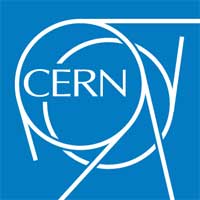
With help from CERN, some 700 Swiss primary-school children from the Geneva area will try out the scientific method for themselves this year. On 26 January 2011, 30 local primary-school teachers met at the site of the LHCb experiment for the launch of the ‘Dans la peau d’un chercheur’ (‘Be a scientist for a day’) project, a joint activity by CERN, PhysiScope (University of Geneva) and the local education authorities in the Pays de Gex and the Canton of Geneva.
From February to June 2011, children aged 9-12 will carry out their own investigations to try to discover what is inside a mystery box, just like CERN scientists attempting to detect particles which cannot be seen with the naked eye.
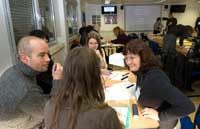
The pupils will begin by designing and carrying out experiments, after which they can compare their ideas and send questions to CERN scientists via the project website. In April and May, they even get to visit a CERN experiment or take part in a PhysiScope event – a chance to grill the physicists about their own experimental methods. Finally, the children will give a lecture of their own, just like real scientists do.
For more information, visit the website (in French), see: www.cern.ch/danslapeaudunchercheur
To learn more about CERN, see: www.cern.ch
EFDA-JET: fusion energy for schools

Fusion holds many attractions for school students of all ages – the concepts of atoms, the Sun and clean energy resonate just as much with 5-year-olds as with pre-university students. Catering for this range has led the communications group at Culham, UK, to develop different tools: on-site visits and off-site talks for the older children and school visits with the ‘Sun Dome’ – a sort of mobile planetarium – to engage the younger children.
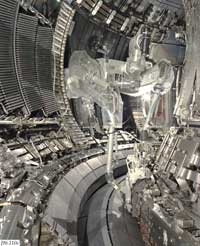
fusion reactor
Image courtesy of EFDA-JET
Visits to EFDA-JET are very popular. Some 1500 school students visited in 2010 and so many schools want to visit (and revisit) that bookings are now being made for 2012. Over the past 18 months, visiting school classes have had the additional excitement of getting a glimpse of the actual fusion reactor (JET), which is being refurbished. When it is operating, the reactor is of course sealed off for safety reasons. Even then, however, visitors can see a full-scale model; this shows the interior of the reactor and the robotic arms that carry out most of the work inside (see image left).
Education manager Jo Silva is delighted that so many students are learning about fusion: “It’s fantastic to see this enthusiasm that hopefully will translate into a new generation of scientists and informed public.”
To learn more about EFDA-JET, see: www.jet.efda.org
EMBL: the first annual schools lecture

On 10 December 2010, Dr Jan Korbel addressed 150 school students and their teachers at the European Molecular Biology Laboratory (EMBL) in Heidelberg, Germany. Several hundred more watched live over the Internet from classrooms across Europe. In the first in a series of annual EMBL Insight Lectures, Jan described the advances that have recently been made in DNA sequencing technology and human genome analysis, and the possible implications that these advances could have for disease research – particularly cancer research. Questions came from both the lecture hall and classrooms via Skype.
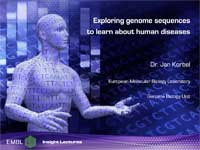
Pierre Olivier and Jan Korbel
“As scientists we have an obligation to explain our research to the public, which obviously includes the young public who are still undecided about their career path,” says Jan. Philipp Gebhardt, education officer at the European Learning Laboratory for the Life Sciences, EMBL’s education facility, which organised the lecture, points to the value of communicating science in such a way: “There is a great social aspect to this. Many people in different countries can watch the same lecture at the same time and ask questions directly to the speaker. It makes it accessible to everyone.”
The lecture remains accessible, as it can be watched here: www.embl.org/ells/insightlectures
To learn more about EMBL, see: www.embl.org
ESA: Walking on ‘Mars’

The first humans have landed on ‘Mars’! On 14 February 2011, Italian Diego Urbina, Russian Alexandr Smoleevskiy and Chinese Wang Yue took their first steps on the simulated Martian surface. The sandy 60 m2 terrain, designed to resemble the Gusev crater on the Red Planet, is housed in the Institute of Biomedical Problems in Moscow, Russia, one storey above the cylindrical modules housing the crew.
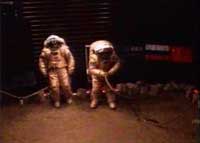
Smoleevskiy on their
simulated Mars-walk
Image courtesy of ESA / IPMB
“Today, looking at this red landscape, I can feel how inspiring it will be to [be] the first human to step foot on Mars,” said Diego at the beginning of his three-hour ‘Mars-walk’ with Alexandr.
This was the highlight of the first full-duration simulated flight to Mars, the international Mars 500 project with extensive participation by the European Space Agency (ESA). For more than eight months, Diego, Alexandr and Yue and three colleagues had been isolated on a virtual ‘flight to Mars’.
Once the mothership arrived in ‘orbit’ around Mars, Diego, Alexandr and Yue entered the lander on 8 February 2011 and ‘landed’ on Mars four days later. After three Mars-walks, they returned to the mothership on 24 February, rejoining their colleagues who had continued to orbit Mars.
Finally, on 1 March 2011, the most difficult part of this psychological study of long flights began: another eight months of monotonous ‘interplanetary cruise’ to get back home. Except this time, the astronauts won’t be able to look forward to a trip to Mars.
To watch a video of the crew’s first Mars-walk, see: www.esa.int/SPECIALS/Mars500/SEMRCFOT1KG_0.html
For more information on the Mars500 project, including a downloadable information kit, text and video diaries by the crew, and much more, see: www.esa.int/SPECIALS/Mars500
The crew will even answer your personal questions by email (to mars500crew@esa.int). Keep them short and think carefully – only the best questions will be relayed to them through ‘mission control’.
To find out how scientists envisage that Mars could be made habitable for humans, see:
Marinova M (2008) Life on Mars: terraforming the Red Planet. Science in School 8: 21-24. www.scienceinschool.org/2008/issue8/terraforming
To learn more about the European Space Agency, see: www.esa.int
ESO: first super-Earth atmosphere analysed
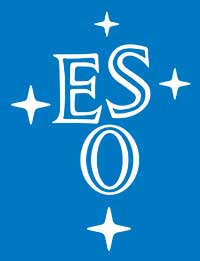
Using the Very Large Telescope of the European Southern Observatory (ESO), the atmosphere around a super-Earth exoplanet has been analysed for the first time. The planet, which is known as GJ 1214b and has 6.5 times the mass of Earth, was studied as it passed in front of its parent star and some of the starlight passed through the planet’s atmosphere. We now know that the atmosphere is either mostly water in the form of steam or dominated by thick clouds or hazes.
GJ 1214b lies about 40 light-years from Earth in the constellation of Ophiuchus (the Serpent Bearer), and its planetary nature was confirmed in 2009, also using ESO telescopes.
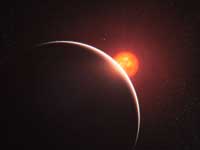
super-Earth exoplanet
orbiting the star GJ 1214.
The planet appears as a large
crescent in the foreground
with its red host star behind
Image courtesy of ESO /
L Calçada
Initial findings suggested that it had an atmosphere, which has now been confirmed and studied in detail by an international team of astronomers, led by Jacob Bean (Harvard–Smithsonian Center for Astrophysics). “This is the first super-Earth to have its atmosphere analysed. We’ve reached a real milestone on the road toward characterising these worlds,” says Bean.
To learn more, see the press release (www.eso.org/public/news/eso1047) and the research paper:
Bean JL (2010) A ground-based transmission spectrum of the super-Earth exoplanet GJ 1214b. Nature 468: 669–672. doi: 10.1038/nature09596
Download the article free of charge here, or subscribe to Nature today: www.nature.com/subscribe
To find out more about the search for Earth-like exoplanets, see:
Jørgensen UG (2006) Are there Earth-like planets around other stars? Science in School 2: 11-16. www.scienceinschool.org/2006/issue2/exoplanet
Fridlund M (2009) The CoRoT satellite: the search for Earth-like planets. Science in School 13: 15-18. www.scienceinschool.org/2009/issue13/corot
and the ESO exoplanet press kit: www.eso.org/public/products/presskits/exoplanets
For more information about ESO, see: www.eso.org
ESRF: shining light onto snake evolution
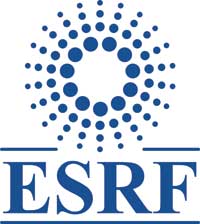
If you ask someone to describe what characterises a snake, one of the answers is likely to be ‘no legs’. We know that this wasn’t always the case – the ancestors of snakes probably looked similar to modern lizards, but over time, they lost their legs. How did that happen?
Scientists at the European Synchrotron Radiation Facility (ESRF) are helping to solve this puzzle using novel X-ray imaging technology to investigate a fossilised snake, Eupodophis descouensi, which lived 95 million years ago in Lebanon, and has two small limbs at its pelvis.
The detailed 3D images revealed that the internal architecture of these fossilised bones strongly resembles that of modern terrestrial lizard legs. Moreover, the results suggest that E. descouensi lost its legs not because they grew in a different pattern, but because they grew more slowly, or for a shorter period of time, than those of their lizard relatives.
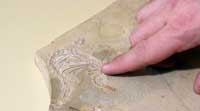
descouensi fossil, with a
finger pointing to the leg
Image courtesy of Chantal
Argoud / ESRF
To learn more, see the press release (www.esrf.eu/news/general/Snake-with-leg) and the (freely available) research paper:
Houssaye A et al. (2011) Three-dimensional pelvis and limb anatomy of the Cenomanian hind-limbed snake Eupodophis descouensi (Squamata, Ophidia) revealed by synchrotron-radiation computed laminography. Journal of Vertebrate Paleontology 31(1): 2-7. doi: 10.1080/02724634.2011.539650
To learn more about ESRF, see: www.esrf.eu
European XFEL: EIROforum’s new member

In November 2010, the seven original members of EIROforum were joined by a new, eighth member: the European X-ray Free-Electron Laser Facility (European XFEL), based in Hamburg, Germany. Like the other members of EIROforum, European XFEL is a European inter-governmental research organisation (EIRO), funded by member states.
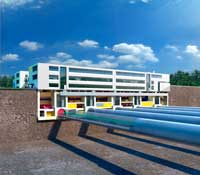
European XFEL building
with the underground
experiment hall
Image courtesy of
European XFEL
The facility will produce ultra-short X-ray flashes which will enable scientists to map the atomic details of viruses, decipher the molecular composition of cells, take three-dimensional images of the nano-world, film chemical reactions and study processes such as those occurring deep inside planets. The European XFEL is currently under construction, and the first X-ray beams will be produced in 2014.
As a member of EIROforum, European XFEL will contribute not only to the funding, but also to the organisation and contents of Science in School. The editorial team are looking forward to welcoming a new member to the editorial board and to articles about the work of European XFEL.
To learn more about European XFEL, see: www.xfel.eu
ILL: a silken surprise

For about five thousand years, silk has been a precious commodity, prized for its beauty, lightness and strength. For three thousand years, the Chinese managed to keep a monopoly on the lucrative silk trade by guarding the secret of how to produce it. Finally, however, the secret got out: silk is produced by moth larvae, also known as silkworms.
Even today, silk continues to fascinate us. For example, how is the silk fibre assembled from the protein precursors inside the silkworm? A recent study at the Institut Laue-Langevin used neutron beams to reveal some unexpected properties of silk proteins.
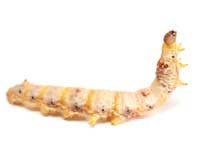
domesticated silkmoth
Image courtesy of arlindo71 /
iStockphoto
Usually, proteins are stable at a concentration of approximately 1 mg / ml, and only start to aggregate at a concentration of about 5-10 mg / ml. The silk precursor proteins, however, behave very differently. The concentration inside the silkworm can be up to 400 mg / ml and yet the proteins remain in solution. When the concentration drops, however, the proteins begin to unfold and expand, eventually clumping together. Under lab conditions, the effect is rather like a neat ball of string unravelling into a tangled mess, but inside the silkworm, order reigns: the insect controls the process, spinning the proteins into highly ordered silk filaments. These results are a big step towards understanding the amazing properties of silks and how to synthesise them and develop materials.
To learn more, see the press release on the ILL news website (www.ill.eu/nc/quick-links/news) or use the direct link: http://tinyurl.com/658slrp
See also the research paper:
Greving I et al. (2010) Small angle neutron scattering of native and reconstituted silk fibroin. Soft Matter 6: 4389-4395. doi: 10.1039/C0SM00108B
To find out about previous ILL research into spider silk, see:
Cicognani G, Capellas M (2007) Silken, stretchy and stronger than steel! Science in School 4: 15-17. www.scienceinschool.org/2007/issue4/spidersilk
To learn more about ILL, see: www.ill.eu






